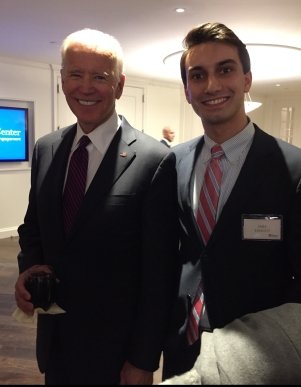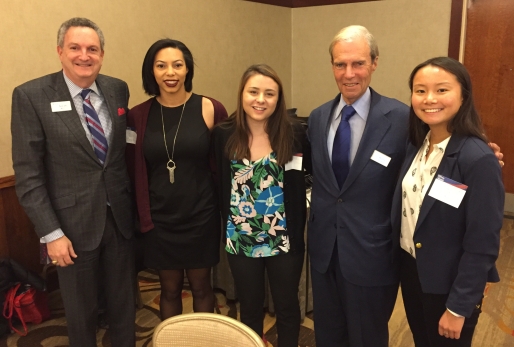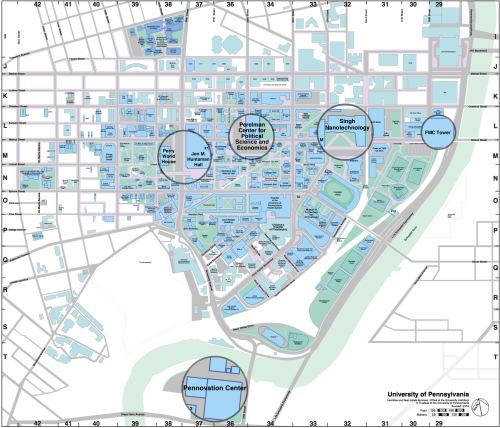By Jorge Penado, C’19
Penn Alumni Relations Work Study Student

Source: Penn Archives 1999
With traditions at universities around the nation being a staple of that institution’s student culture, it is undeniable that students at Penn have developed their own, cherished traditions throughout the year. Whether it’s something like Hey Day during Junior Year or the Econ Scream during Freshman year, Penn students have engaged in these traditions with the fervor that school spirit usually evokes. Though most traditions are relatively normal in the pantheon of university traditions, one of them might cause a non-Penn individual to double take: toast throwing at football games. As a tradition that roughly started in the 1970s, it has since become one of the staple events that every Penn student should participate in at least once throughout their time at the university.
First and foremost, it is important to ask a very basic question: What exactly is toast throwing? While every Penn student has at least heard of the tradition whether they’ve participated or not, it helps to establish exactly what toast throwing entails. As mentioned earlier, the tradition is known to have started in the 1970s during a time when alcohol was prohibited from Franklin Field where all football games are held. This ban on alcohol would actually interfere with another common tradition at football games where audience members would drink alcohol at the end of the third quarter when the Penn Band would play, “Drink a highball.” In this song created by G.B. Brigham, the song would close with the following lyrics, “Drink a highball and be jolly. Here’s a toast to dear old Penn!” After the final line, everyone in the audience would drink the alcohol as a “toast” for Penn. Nonetheless, the ban would prevent people from toasting with alcohol and would leave room for the new tradition to be launched by Greer Cheeseman and his friends.
Cheeseman, as the current director of the Penn Band, an employee for the University, and local Penn aficionado, retells the story of how a “toast to dear old Penn,” became a literal piece of toast “to dear old Penn.” Though the details of the tradition remain slightly vague, Cheeseman does remember where the idea originally came from Rocky Horror Picture. After some of Cheeseman and some of his fraternity brothers attended a showing of Rocky Horror, they were intrigued by the interactive nature of the show, particularly the part where the audience throws toast at the screen after the character, Frank, proposes a toast. Interestingly enough, the two held so many parallels that Cheeseman and his friends eventually got the brilliant idea to translate that at an actual football game. After some time, toast throwing would eventually catch on and spread quickly as most every Penn student now knows exactly what toast throwing at football games means.
When considering the position of toast throwing in the grander scheme of Penn school spirit, it’s clear that it definitely holds a special place in the school’s history. Cheeseman recounts how football games at the time were huge events that everybody attended to create that sense of pride in the school. It also didn’t hurt that Penn’s football team was particularly good and attracted their fair share of people. When asked how it feels to be a part of such a noteworthy tradition at Penn, Cheeseman explains that, while he’s not exactly sure how he feels, he does acknowledge that it’s rather “neat” to be a part of Penn’s history. Though football games don’t receive the same audiences now as they did back in the day, it’s indisputable that toast throwing will remain a part of the experience at football games. With students dividing their time between academics, social lives, and many other things, it’s difficult to attend every football game and participate all the time. Nonetheless, we can rest assured that the tradition won’t be dying out anytime soon as long as groups like the Penn Band, that go to most sports games, keep the tradition alive and others continue to distribute toast at every game at Franklin Field.
After almost fifty years of the tradition was introduced, toast throwing continues to excite people who are first experiencing the wave of toast fly above them for about 15 to 30 seconds at the end of the third quarter. With fans customizing their toast with a letter “P” and stockpiling stacks of toast, it definitely still evokes a sense of school spirit through such a unique tradition. Lucky enough, the toast-eating Zamboni-machine helps with the immense cleanup.

- Image: Homecoming 2018
Back row left to right – Jason Feldman, ENG02; Kushol Gupta, C’93, BGS’03, Lisa Shapiro (Bardfeld), C’93; Greer Cheeseman, EE’77
Second Row left to right – Kelly (Naeun) Ha, C’16; Marianne Brogdale (Alves*), C’93; Richard DiNapoli, C’19; Robin Coyne, NU’12, GNU’15
Third Row left to right – Lauren Mendoza, C’15; Zabryna Atkinson-Diaz, C’19, GR’20; Jenna Harowitz, C’18
All former and current Penn Band Drum Majors
*Marianne Brogdale (Alves) was the first female Drum Major in Penn Band history.
Source: Source: Kushol Gupta, C’97, GR’03
- Image: Toast Toss at 2018 Penn vs Bucknell Game
Source: Kushol Gupta, C’97, GR’03
Special thanks to Kushol Gupta, C’97, GR’03, for his consultation and partnership on this article.









 The Penn community is like no other. It is comprised of some of the smartest, most passionate, and creative people I have ever met. It is a truly expansive community in so many ways, something that I’ve come to realize this year. I recently took a trip to Spain, where I coincidentally ran into many other Penn students. Every time I am on the metro back home in Washington D.C., I see Penn sweaters and hats on fellow travelers. I always find myself reading articles about the innovators of today’s world, only to find out that they are Penn grads. I know students who are doing everything from running their own nonprofits and startups to creating their own music and art.
The Penn community is like no other. It is comprised of some of the smartest, most passionate, and creative people I have ever met. It is a truly expansive community in so many ways, something that I’ve come to realize this year. I recently took a trip to Spain, where I coincidentally ran into many other Penn students. Every time I am on the metro back home in Washington D.C., I see Penn sweaters and hats on fellow travelers. I always find myself reading articles about the innovators of today’s world, only to find out that they are Penn grads. I know students who are doing everything from running their own nonprofits and startups to creating their own music and art. Our events, ranging from pop-ups on Locust Walk and finals goody bags to opportunities to meet alumni and study breaks in Sweeten, aim to encourage students to take a moment from their busy lives to spend time with other members of the Penn community (often through promises of food). I love that through this committee, I get to be part of some of the oldest traditions at Penn, such as Homecoming or Spring Fling; traditions that truly every member of the Penn community, no matter their major or future plans, can be a part of. I also love that I get to be part of creating new (and what I hope will be) lasting traditions, such as Friendsgiving, our annual Thanksgiving dinner for the Sophomore class. I don’t expect everyone to remember each Penn Traditions study break they attend or free gift they get on Locust Walk, but I do hope that we contribute to fostering happy and fun moments amid the stress that comes with being a Penn student.
Our events, ranging from pop-ups on Locust Walk and finals goody bags to opportunities to meet alumni and study breaks in Sweeten, aim to encourage students to take a moment from their busy lives to spend time with other members of the Penn community (often through promises of food). I love that through this committee, I get to be part of some of the oldest traditions at Penn, such as Homecoming or Spring Fling; traditions that truly every member of the Penn community, no matter their major or future plans, can be a part of. I also love that I get to be part of creating new (and what I hope will be) lasting traditions, such as Friendsgiving, our annual Thanksgiving dinner for the Sophomore class. I don’t expect everyone to remember each Penn Traditions study break they attend or free gift they get on Locust Walk, but I do hope that we contribute to fostering happy and fun moments amid the stress that comes with being a Penn student.





 Be You: Everyone at Penn is intelligent, talented, and incredible. It is a great feeling being a part of this dynamic student body, yet it can be overwhelming because you might start to compare yourself to others; you should never do this. By measuring yourself against others, you lose sight of who you are. Being who you are is what got you into Penn, so be unapologetically you each and every day.
Be You: Everyone at Penn is intelligent, talented, and incredible. It is a great feeling being a part of this dynamic student body, yet it can be overwhelming because you might start to compare yourself to others; you should never do this. By measuring yourself against others, you lose sight of who you are. Being who you are is what got you into Penn, so be unapologetically you each and every day.





















